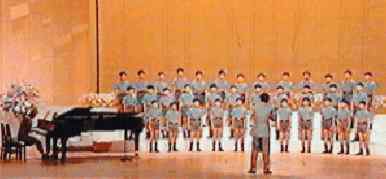
Figure 1.--The Gyosei Elementary School wears a uniform of grey shirts, grey short pants, and dark grey kneesocks. It is the same uniform worn by the other students.


Figure 1.--The Gyosei Elementary School wears a uniform of grey shirts, grey short pants, and dark grey kneesocks. It is the same uniform worn by the other students. |
One of the most prestigious private schools in Japan is the Tokyo Gyosei school. Interestingly it was established by French missonaries in the late 19th century. It still retains its catholic character, although most of the boys attending the school are not Christians. The school sponsors one of the best choirs in Japan.
This is boy choir of Gyosei elementry school "de l'Etoile du matin"in Tokyo. The school was established in Japan by the French Catholic missionaries in the 1880s at an early stage of Japan's opening to the West. Gyosei is a private boys school run by the Catholic Church. It was founded by French Catholics (probably Dominicans), although I'm not absolutely sure about
that). The school indicates that they were founded by the Society of Mary, a Catholic order I have never
heard of it.
The school educates only boys from 6 to 18 years old. The school emphasizes its historic connections with France. In the school all of the pupils study French and often sing "La Marseillaise." All of the students are familiar with "La Marseillaise" and can sing it completely in French. It is the second song of the school.
Gyosei is, according to a HBC contributor in Japan, one of the most prestigious, most expensive schools in the country. Even though Japan's population is less than 1 percent Christian, Christianity has a sort of upper-class image here. Many of the schools and universities founded in the last century by Christian missionaries are generally quite
presitigious. The most elite girls school in the country was also founded by French catholics. The Empress graduated from there. As an example of how different the Japanese are, try imagining Queen Elizabeth having graduated from a Buddhist
academy. Gyosei is the boys' counterpart.
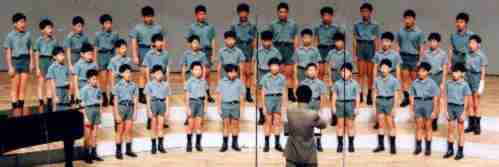
Figure 2.--Participation in the Choir is very popular at Gyosei and there is a good bit of competition by the boys. |
Participation in the choir is very popular and there is a good bit of competition among the boys. The conductor of the choir Les Petits Chanteurs
de l 'Ecole de l' Etoile du Matin is Mr. Yuichi Hasunuma. This choir is composed of the pupils from 10 to 12 years old in the elementary school of Gyousei.
The Gyousei choir is one of the most accomplished in Japan. This choir is very highly regarded in Japan. It has Japan's National Broadcast (NHK)'s prize many times.The choir participates in the chorus contest for boys and girls in Japan by the Japanese Broadcasting (NHK) four times and has won the first prize three times and the second prize once. The school's boy's choir Les Petits Chanteurs de l' Etoile du Matin is one of the few all boy choirs in Japan. Most of the other Japanese choirs are composed of both boys and girls choirs.
The modern Gyosei choir dates from 1964. They won the top prize in the elementary school division for NHK's (BBC type national network) nationwide school chorus contest in 1996. They appeared once as mission
school choir in an now defunct NHK program. They ahve appeared in many other events.
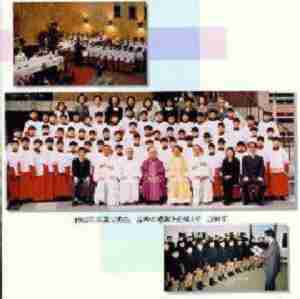
Figure 3.--The Gyoseo choir has issued three records with some of their best known pieces. |
The Gyoseichoir's records show quite a range of musical pieces and styles. Some of it is Japanese works, but most is foreign language works.
The first album of Les Petits Chanteurs de l' Ecole de l' Etoile du Matin. They won the first
prize by singing 14 and 15 in the Japanese chorus festival in 1996. 1) How well the friendship is!, 2)
Let's go to the sea, 3) I love because....., 4) Ihimonme no Ippeisan, 5) The white cardigan, 6) The journey,
7) Mizutama no Furusato, 8) The sky in my skech book,
9) Black Panser, 10) With my friend, 11) Mangetsu no Fushigi Pololokka, 12) The summer of the year in which I graduate from the elementary school, 13) Himawari Densetsu, 14) Let' go by bycycle, 15) Hikkori no Okusan, and 16) Hikkori no Okusan.
The second album is Les Petites Etoiles Chantent). French reviewers report that it is amazing to hear the little Japanese boys, singing the French song "La Marseillaise". The pieces include:
1) The school song, 2-4) La Marseillaise, 5) The prayer for the peace, 6) The Lord's Prayer, 7) Ave Maria, 8)
Scherlom, 9) Walter Weston, 10) Pie Jesu (Faure), 11)
Pie Jesu (Webber), 12) Im Paradisum (Durufle), 13)
Ave Verum (Gounod), 14) The tailor in my dream, 15)
The spaceship in my dream, 16) The season, 17) The wind and the tree, 18) The flower and the girl
18/24) From "A ceremony of carols (Britten).
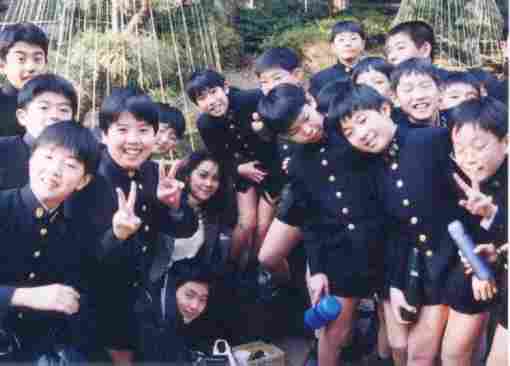
Figure 4.--The Gyosei winter uniform is the Prussian cadet-style uniform still commonly worn at secondary schools. The younger Gyosei boys, however wear short pants rather than the long pants worn by the older boys. students. |
The Gyosei boys choir has no special uniform. The choristers at the school wear the same as the school uniform as the other students. There is both a
summer and winter uniform. They also perform in liturgical robes.
The summer uniform looks to be grey shirts and short pants (it's realy more of an olive green than a gray but you can't tell from the picture, of course) worn with black three-quarter length or kneesocks that the boys never pull up--unlikely in Japan. The uniform is distinctive because most other schools with uniforms
have white shirts and gray or navy shorts.
The Gyosei winter uniform is the Prussian cadet uniform worn at junior and senior highschool. The only difference is that the Gyosei boys wear smart short pants rather than the long pants worn at the secondary schools. It is unusual in Japan for elementary schools to adopt the cadet uniform.
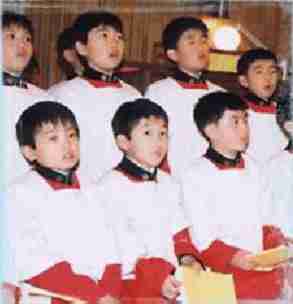
Figure 5.--The Gyoseo choir as a choir in a catholic scgool also performs religious works and provides music for religious services. |
Navigate the Historic Boys' Clothing Web Site:
[Introduction]
[Chronologies]
[Style Index]
[Biographies]
[Bibliographies]
[Contributions]
[Activities]
[Countries]
[Boys' Clothing Home]
Navigate the Historic Boys' Clothing Japnese pages:
[Main Japanese page]
[Japanese monarchy]
[Japanese school uniform]
[Japanese scouts]
[Japanese choirs]
[Japanese music recitals]
[Japanese department
stores]
Navigate the Historic Boys' Clothing Web choir costume pages:
[Return to the Main Japanese choir page]
[Return to the Main choir page]
[Australia]
[Austria]
[Belgium]
[Bulgaria]
[Canada]
[Denmark]
[England]
[France]
[Finland]
[Germany]
[Japan]
[Netherlands]
[Poland]
[South Africa]
[United States]
Navigate the Historic Boys' Clothing Web style pages:
[Short pants suits]
[Blazers]
[Collars]
[Lace collars]
[Ruffled collars]
[Eton collar]
[Fauntleroy suits]
[Sailor suits]
[Ring bearer/page costumes]
[First Communion suits]
